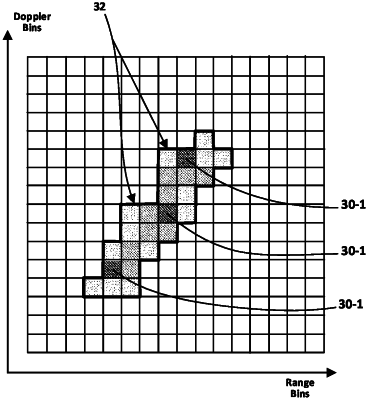| CPC G01S 13/584 (2013.01) [G01S 13/38 (2013.01); G01S 13/53 (2013.01); G01S 13/931 (2013.01); G05B 2219/43 (2013.01)] | 10 Claims |

|
1. A method for determining at least one parameter of a moving object having spatially separated reflectance surfaces, comprising:
receiving, at a receiving antenna, reception signals that are reflections of transmitted radar signals, from the spatially separated reflectance surfaces;
processing the reflection signals radar signal to provide a range-Doppler matrix;
determining, within the range-Doppler matrix, at least two local maximum cells, each corresponding to and indicating a respective range-radial velocity of a respective different one among the spatially separated reflectance surfaces of the object;
transferring at least a part of the range-Doppler matrix to a neural network, wherein the at least the part includes the at least two local maximum cells; and
determining at least one parameter of the object by the neural network, based at least on the respective range-radial velocity indicated by each of the at least two local maximum cells,
wherein the object is a road user.
|